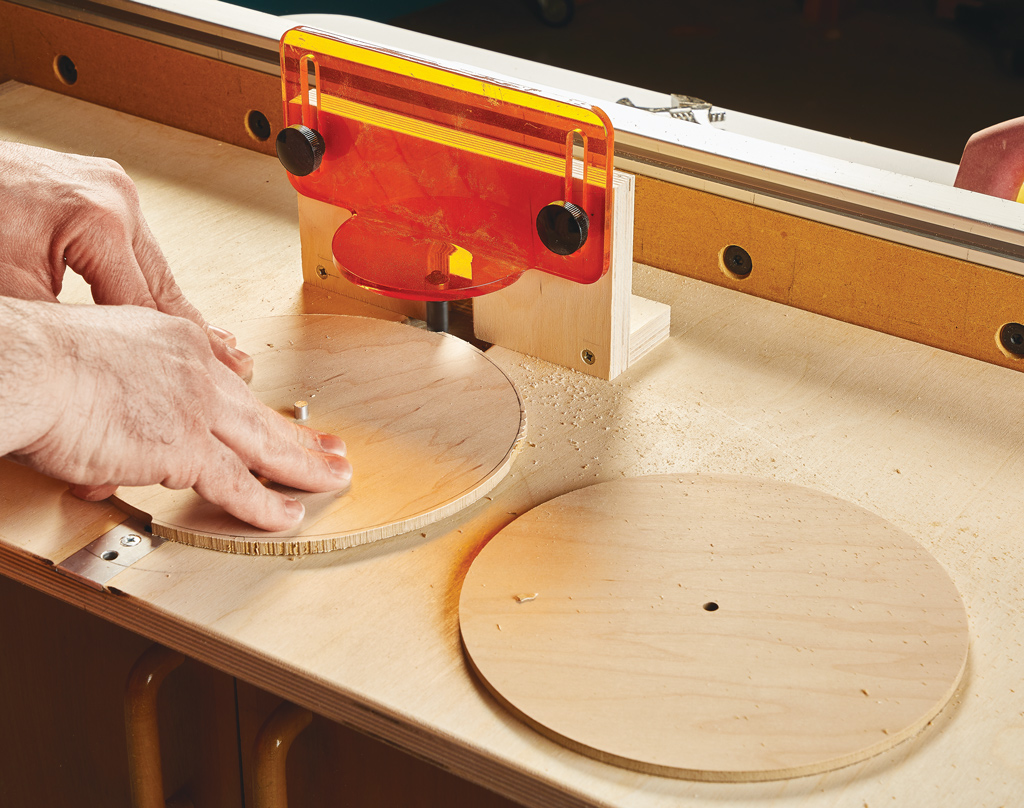The most critical setup in most routing tasks is to accurately set the bit height. It sounds simple enough. But depending on the type of bit and what task you’re doing (joinery or pro files), setting the bit can be tricky. Over the years, I’ve picked up a few short cuts that make this task faster, easier, and more accurate. Chamfer bits are notorious for being tough to set to a precise height. That’s because there really aren’t any corners to use as a reference point. So getting an exact size usually involves a number of test cuts. Once I get the bit set, I rout the pro file in a small block and label it. So the next time I need to set the bit, I can use the block as a guide. Even if the chamfer size I need doesn’t quite match the ones routed on the block, the block can still get me in the ballpark more quickly.

Another type of profile bit that can cause a headache is a roundover. The problem here is that if the bit is set too high, you end up with a slight ridge line that’s tough to remove without affecting the profile. A quick and easy tip for setting the bit height is shown in the left photo. Raise the bit until the outside edge just touches a ruler held across the bit opening. After making a test cut to con- rm the setting, rout the profile in a set-up block dedicated to all your roundover bits.

There’s one other trick I use at the router table when I’m working with pro- file bits. Even though the bits have bearings, I like to use the fence to provide greater control of the workpiece. For this to work, the fence has to be flush with the bearing on the bit. The second photo at the bottom of the facing page shows how to do this quickly and easily with a straightedge.

Some joinery bits like dovetail bits, drawer joint bits, or the stile and rail bits shown here require specific setups for an accurate fit. And this can involve a lot of fussing around. If you don’t use these bits often, spending some time getting the bit set right may not be a big deal. But if they were easy to set up, you may find yourself using them more often. The way to simplify the process is to make a gauge block, as shown in the photos above. It’s as simple as routing the profile in a piece of scrap after the bit is set correctly. The next time you need the bit, use the gauge block for your setup, make a test cut, and you’re ready to go.

Speaking of set-up gauges, take a look at thisshop-built version. The advantage of a setup gauge over a ruler is that the bit contacts the top of a screw for a positive setting. Another advantage is that you can use the gauge to step the bit up for multiple passes. The gauge is made from a few small pieces of MDF. Each of the screws is set to a different height. Brass screws prevent chipping the carbide cutting edges.












